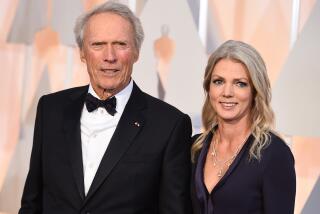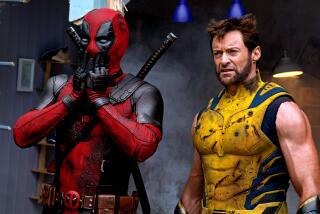The Frill Is Gone
The Movie: “Mary Reilly”
The Setup: Mary Reilly (Julia Roberts) is the housemaid for Dr. Jekyll/Mr. Hyde (John Malkovich) in Victorian England.
The Costume Designer: Dublin, Ireland-based Consolata Boyle, whose movie credits include “Into the West” and “The Secret of Roan Inish.”
The Look: With no makeup, plain-as-porridge uniforms and hair--an auburn wig with choppy bangs--tucked inside either a babushka or popover-shaped bonnet, Roberts’ star power is appropriately dampened. Unlike some of the servants’ garb in “Remains of the Day,” for example, Roberts’ dresses lack even an inch of lace to give the girl a lift. In drab gray or black, they’re always buttoned to the neck, with little white starched collars. Nighties are gloomy cotton sacks. “Frills were not to be,” Boyle said, adding that director Stephen Frears demanded “stark simplicity and historical correctness.”
You Should Know: Although unaccustomed to period costumes, Roberts was “100% into it,” Boyle said. She arrived at the set each morning in jeans and gym shoes and set about putting on her layers, including period-correct pads to enlarge her hips and rear, a chemise, a lace-up corset, three petticoats (for fullness and warmth) and bloomers. “I think she hugely enjoyed it,” the designer recalled. “It gave her a stance she didn’t have normally. And she was very strong on the feeling of her character’s poverty and her simplicity.”
Trivia: Throughout the film, light and dark clothing is used to represent good and evil. Stripes underscore several story themes, including the verticality of the Victorian city architecture, the rigidity of society, and even the bars of a cage holding in emotion.
Hit: The one bit of relief comes from Glenn Close as a whorehouse owner. She’s a fashion wonder with blood red lips, gold tooth, jet bead jewelry, spotted veil and frothy feather-trimmed coat.
Inspiration: Research was done at the Victoria & Albert Museum in London, the Royal Museum of Scotland, the National Library of Scotland and Scottish National Portrait Gallery. The books and travel diaries of Robert Louis Stevenson, author of “The Strange Case of Dr. Jekyll and Mr. Hyde,” were also studied. Such sources “fuel your imagination,” Boyle explained. “Some things you forget about, some come back and end up in a costume. Stevenson’s life in the tropics was well-documented with photographs. He wore a lot of extraordinary linen suits and I used that for Jekyll’s side of the character,” Boyle said.
* Sources: Principals’ costumes were custom-made in England.
More to Read
Only good movies
Get the Indie Focus newsletter, Mark Olsen's weekly guide to the world of cinema.
You may occasionally receive promotional content from the Los Angeles Times.






